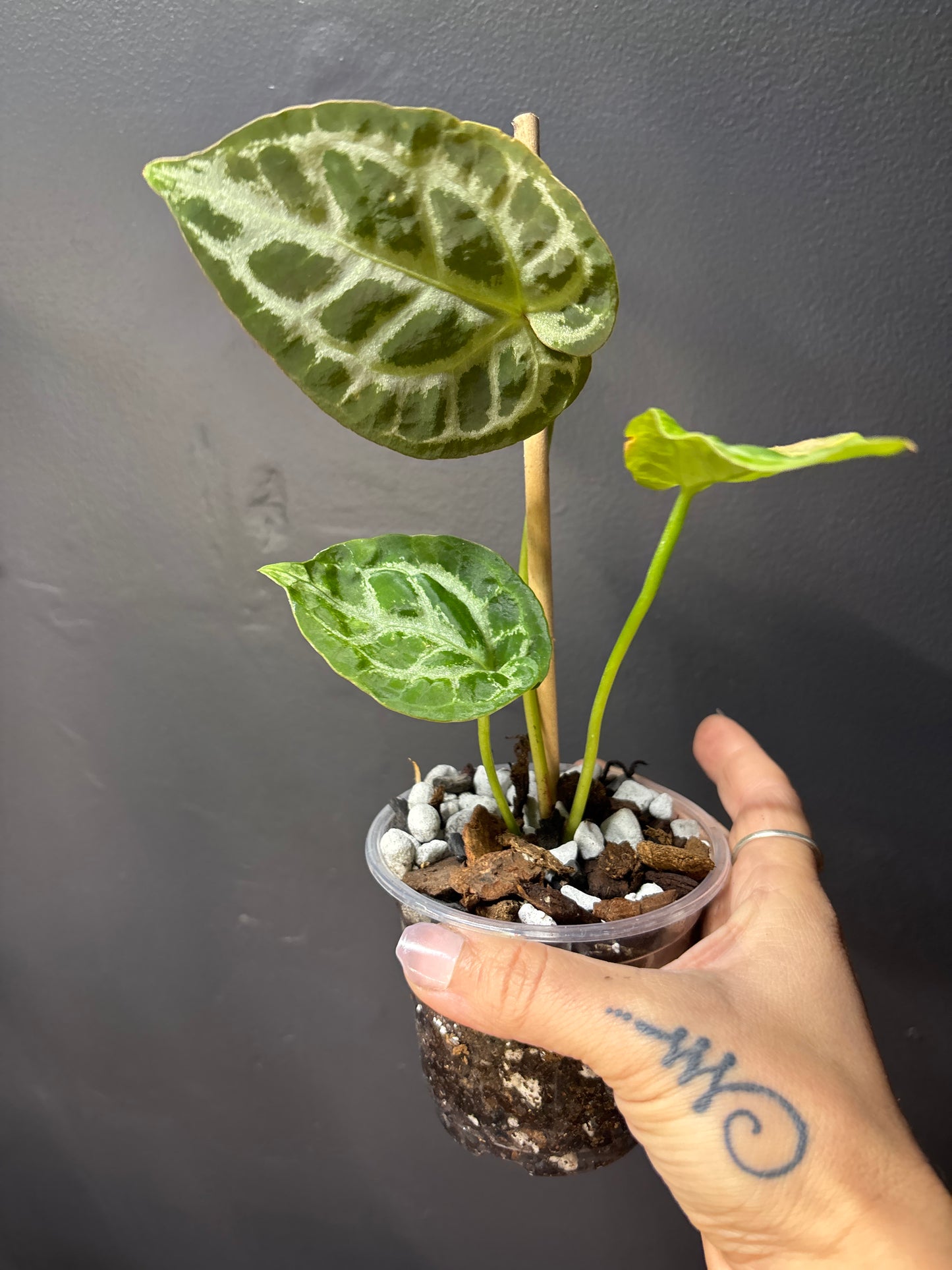Text block
Anthurium Silver Blush – Rare Exotic Indoor Plant
Anthurium Silver Blush – Rare Exotic Indoor Plant
Couldn't load pickup availability
Share
The Anthurium Silver Blush is a rare and striking indoor plant prized for its velvety, silver-veined foliage that creates an elegant statement in any space. Known for its compact growth and unique, silvery sheen, this exotic tropical plant thrives in well-lit indoor environments and adds a luxurious touch to homes and offices. Its heart-shaped leaves with intricate silver veining make it a must-have for collectors and plant enthusiasts alike.
Why Choose Anthurium Silver Blush?
• Rare Collector’s Plant: A unique addition to any plant collection.
• Stunning Foliage: Deep green leaves with bold silver veins.
• Low Maintenance: Easy care and adaptable to indoor conditions.
• Perfect for Interior Styling: Ideal for modern and minimalist decor.
Plant Care Tips:
• Light: Prefers bright, indirect light for optimal growth.
• Watering: Keep soil consistently moist but avoid overwatering.
• Humidity: Thrives in high humidity; occasional misting recommended.
• Soil: Use well-draining, nutrient-rich potting mix.
Elevate your indoor space with the Anthurium Silver Blush—order yours today while supplies last!












